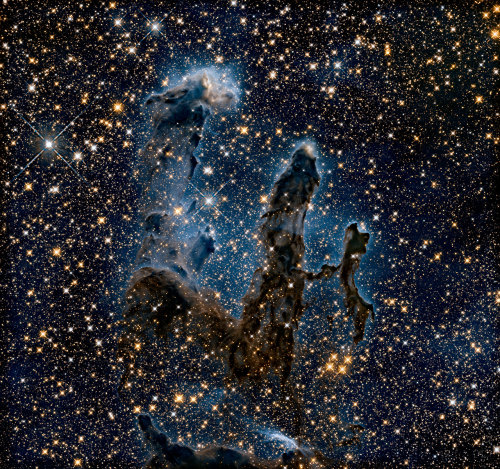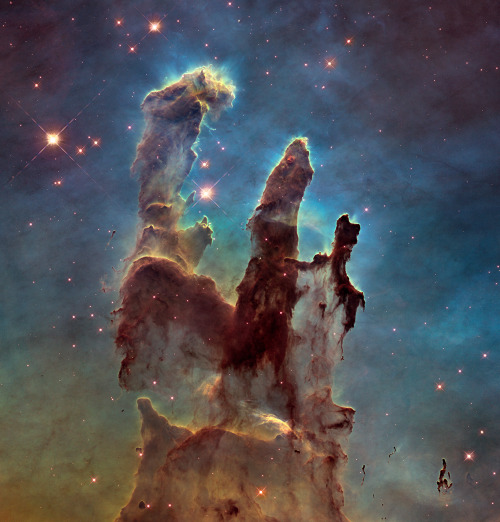Virgin Galactic Completes First Powered Flight Of VSS Unity (April 5, 2018.) Two And A Half Years After






Virgin Galactic completes first powered flight of VSS Unity (April 5, 2018.) Two and a half years after a fatal accident temporarily halted flight activities, Virgin Galactic completed its first powered flight test of the VSS Unity Thursday, April 5. The company’s last powered flight experienced an anomaly during the beginning of its descent phase, resulting in the disintegration of the vehicle midair and the death of one pilot. Shortly after 9am MDT, The Unity, attached to the VSS Eve carrier mothership, took off from Spaceport America in the Mojave Desert. The two vehicles climbed to 14,200 meters where the Unity was released. The Unity’s powered ascent lasted for 30 seconds, 40 seconds shorter than a nominal flight profile, and achieved a speed of Mach 1.87 or 2,309 kilometers per hour. Unity reached a peak altitude of 25,686 meters, or 25.6 kilometers. By comparison, the Unity’s sister craft, the VSS Enterprise, reached a top speed of Mach 1.4 and a maximum altitude of 21,000 meters during its third powered flight in January 2014. The spacecraft’s descent through the atmosphere and feathering of its wings was performed flawlessly, succeeding where the final, fatal flight of the VSS Enterprise did not in 2014. Unity successfully landed back at Spaceport America’s runway one hour and twelve minutes after takeoff and eleven minutes after separation from Eve.

The Unity coming to a landing at Spaceport America’s runway after its first powered flight test, April 5, 2018. P/c: Virgin Galactic
The company’s last powered flight with the VSS Enterprise experienced an anomaly during the beginning of its descent phase, resulting in the disintegration of the vehicle midair and the death of one pilot.
Almost nearly completed at the time of the incident, the VSS Unity was unveiled to the public in February of 2016. It subsequently underwent a system of ground checks and eleven unpowered flights to validate the modifications made after the 2014 incident. Following Thursday’s flight, Virgin Galactic did not state how long the powered flight test program would last before operational flights with paying customers would begin. CEO Richard Branson tweeted shortly after Unity landed that the company is back on track following the 2014 incident.

P/c: Virgin Galactic.
More Posts from Epic-flight and Others

‘jump’

During descent


Sometimes… there’s more than meets the eye. 👀 You’re looking at two very different takes on an iconic image.
Human eyes can see only a small portion of the range of radiation given off by the objects around us. We call this wide array of radiation the electromagnetic spectrum, and the part we can see visible light.
In the first image, researchers revisited one of Hubble Space Telescope’s most popular sights: the Eagle Nebula’s Pillars of Creation. Here, the pillars are seen in infrared light, which pierces through obscuring dust and gas and unveil a more unfamiliar — but just as amazing — view of the pillars. The entire frame is peppered with bright stars and baby stars are revealed being formed within the pillars themselves. The image on the bottom is the pillars in visible light.
Image Credit: NASA, ESA/Hubble and the Hubble Heritage Team
Make sure to follow us on Tumblr for your regular dose of space: http://nasa.tumblr.com.

Reticulating Splines.
Twitter / Instagram / Gumroad / Patreon
KnownOrigin / SuperRare / OBJKT / Zedge

Space shuttle re-entry.

An image of Jupiter taken by NASA's Hubble Space Telescope in ultraviolet, visible, and near-infrared light on Aug. 25, 2020, is giving researchers an entirely new view of the giant planet and offers insights into the altitude and distribution of the planet's haze and particles. This complements Hubble’s visible-light pictures that show the ever-changing cloud patterns. In this photo, the parts of Jupiter’s atmosphere that are at higher altitude, especially over the poles, look red from atmospheric particles absorbing ultraviolet light. Conversely, the blue-hued areas represent the ultraviolet light being reflected off the planet. A new storm at upper left, which erupted on Aug. 18, 2020, is grabbing the attention of scientists in this image. The “clumps” trailing the white plume appear to be absorbing ultraviolet light, similar to the center of the Great Red Spot, and Red Spot Jr. directly below it. This provides researchers with more evidence that this storm may last longer on Jupiter than most storms.
Credits: NASA, ESA, STScI, A. Simon (Goddard Space Flight Center), M.H. Wong (University of California, Berkeley), and the OPAL team


HiPOD: Mesa Stratigraphy at Terby Crater
A 2 to 3 kilometer sequence of stratigraphy exposed across three mesas in the northeastern portion of Terby Crater likely capture a diverse range of sedimentary rock types that include deposition across all of the three major Martian geologic eras: Noachian, Hesperian and Amazonian. (These epochs date back billions of years.) We can create digital terrain models o measure bedding dips at these key locations. (Enhanced color cutouts are less than 1 km across.)
ID: ESP_074888_1520 date: 18 July 2022 altitude: 260 km
NASA/JPL-Caltech/UArizona

Cesare Reggiani
View these celestial beauties taken by the Hubble Space Telescope and released as a set of views in a modern day “Messier Catalog."
Spotting comets was all the rage in the middle of the 18th century, and at the forefront of the comet hunt was a young French astronomer named Charles Messier. In 1774, in an effort to help fellow comet seekers steer clear of astronomical objects that were not comets (something that frustrated his own search for these elusive entities), Messier published the first version of his “Catalog of Nebulae and Star Clusters,” a collection of celestial objects that weren’t comets and should be avoided during comet hunting. Today, rather than avoiding these objects, many amateur astronomers actively seek them out as interesting targets to observe with backyard telescopes, binoculars or sometimes even with the naked eye.
Hubble’s version of the Messier catalog includes eight newly processed images never before released by NASA. The images were extracted from more than 1.3 million observations that now reside in the Hubble data archive. Some of these images represent the first Hubble views of the objects, while others include newer, higher resolution images taken with Hubble’s latest cameras.
Learn more: https://www.nasa.gov/content/goddard/hubble-s-messier-catalog
Make sure to follow us on Tumblr for your regular dose of space: http://nasa.tumblr.com.
-
 doctorgiggles liked this · 1 month ago
doctorgiggles liked this · 1 month ago -
 artichoke606 reblogged this · 1 year ago
artichoke606 reblogged this · 1 year ago -
 artichoke606 liked this · 1 year ago
artichoke606 liked this · 1 year ago -
 ysvisuals reblogged this · 3 years ago
ysvisuals reblogged this · 3 years ago -
 originalflappatrolpsychic liked this · 3 years ago
originalflappatrolpsychic liked this · 3 years ago -
 swedish-buffet reblogged this · 3 years ago
swedish-buffet reblogged this · 3 years ago -
 alwaysamaritimer reblogged this · 3 years ago
alwaysamaritimer reblogged this · 3 years ago -
 alwaysamaritimer liked this · 3 years ago
alwaysamaritimer liked this · 3 years ago -
 geronimo1957 liked this · 3 years ago
geronimo1957 liked this · 3 years ago -
 aletto61 liked this · 3 years ago
aletto61 liked this · 3 years ago -
 gabste-dillane-gabriel-artist reblogged this · 3 years ago
gabste-dillane-gabriel-artist reblogged this · 3 years ago -
 gabste-dillane-gabriel-artist liked this · 3 years ago
gabste-dillane-gabriel-artist liked this · 3 years ago -
 a-lc01 liked this · 3 years ago
a-lc01 liked this · 3 years ago -
 transparentgentlemenmarker reblogged this · 3 years ago
transparentgentlemenmarker reblogged this · 3 years ago -
 epic-flight reblogged this · 3 years ago
epic-flight reblogged this · 3 years ago -
 nyc-uws liked this · 3 years ago
nyc-uws liked this · 3 years ago -
 iheartvelma reblogged this · 3 years ago
iheartvelma reblogged this · 3 years ago -
 patsat323 liked this · 3 years ago
patsat323 liked this · 3 years ago -
 luminoussphereofplasma reblogged this · 3 years ago
luminoussphereofplasma reblogged this · 3 years ago -
 cesarfellz liked this · 4 years ago
cesarfellz liked this · 4 years ago -
 odinosiris6 reblogged this · 4 years ago
odinosiris6 reblogged this · 4 years ago -
 zhuzha1955-blog liked this · 4 years ago
zhuzha1955-blog liked this · 4 years ago -
 odin606 reblogged this · 4 years ago
odin606 reblogged this · 4 years ago -
 odin606 reblogged this · 4 years ago
odin606 reblogged this · 4 years ago -
 vaquitacochuda2 reblogged this · 4 years ago
vaquitacochuda2 reblogged this · 4 years ago -
 darknight2525 liked this · 5 years ago
darknight2525 liked this · 5 years ago -
 profanities-of-common-sense reblogged this · 5 years ago
profanities-of-common-sense reblogged this · 5 years ago -
 magnificenttigernut liked this · 5 years ago
magnificenttigernut liked this · 5 years ago -
 reddog1984 reblogged this · 5 years ago
reddog1984 reblogged this · 5 years ago -
 odin606 reblogged this · 5 years ago
odin606 reblogged this · 5 years ago -
 wunkosaurus93 reblogged this · 5 years ago
wunkosaurus93 reblogged this · 5 years ago -
 odinosiris6 reblogged this · 5 years ago
odinosiris6 reblogged this · 5 years ago -
 odinosiris6 liked this · 5 years ago
odinosiris6 liked this · 5 years ago -
 wachsurfer2018 liked this · 5 years ago
wachsurfer2018 liked this · 5 years ago -
 palette8 liked this · 6 years ago
palette8 liked this · 6 years ago -
 nightwolf0 liked this · 6 years ago
nightwolf0 liked this · 6 years ago -
 aeromodelsblog liked this · 6 years ago
aeromodelsblog liked this · 6 years ago

